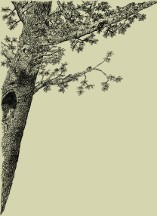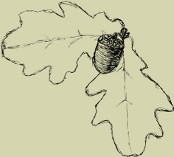42 41 40 39 38 37 36 35 34 33 32 31 30 29 28 27 26 25 24 23 22 21 20 19 18 17 16 15 14 13 12 11 10 9 8 7 6 5 4 3 2 1
Zeszyt 34 (2003)
The aim of the study was to determine a relationship between the growth ring structure and the moisture content in the green wood of two species of oak trees. The species studied were English oak (Quercus robur) and northern red oak (Q. rubra), with different concentrations of tylosis.
Key words: early wood, late wood, growth ring breadth, green wood, moisture content, tylosis, Quercus robur, Quercus rubra
The principles and basic assumptions of the cup method for the bound diffusion determination were discussed. A detailed analysis of the influence of the assumptions of surface bound water content, boundary condition of the first kind, the constant value of the diffusion coefficient and correction of relative humidity inside the cup was provided. A numerical example was presented to verify practical credibility of the discussed method.
Key words: bound water diffusion, transport properties, assumptions’ credibility, prediction accuracy
The paper presents results of a study of wood hardness for 13 tree species (4 coniferous, 3 ringporous and 6 diffuse-porous) measured along and across the fibres. The measurements were performed by the Janka method by indenting a steel ball at a depth of its radius and half of its radius.
Key words: wood, Janka hardness, depth of indentation, conversion factor
The applied research method was estimated. The results of the individual tests, as well as the criteria of their estimation were discussed. The obtained results were compared to the data obtained by the other authors. The attempt was made to clasify phytotoxicity of the tested wood preservatives.
Key words: wood preservatives, phytotoxicity, environment protection
Investigations of the elasticity modulus in bending and the bending strength of wood-based panels: particleboard, laminated particleboard, OSB, MDF, HDF, laminated HDF and hardboard are presented. Two directions of loading: perpendicular and parallel to the board plane were taken into account.
Key words: wood-based panel, particleboard, fibreboard, modulus of elasticity, bending strength
The influence of joint dimensions on the bending strength and stiffness of tenon joints was investigated. Factors such as the tenon thickness, length and width were considered. The regression functions for the strength and stiffness of the joint were calculated.
Key words: tenon joint, tenon dimensions, bending strength, stiffness, regression formula
Precision of rebate clearance was investigated in industrial conditions. The computer program STAT-9000 was used to analyze the results. Coefficients of process quality ability and process centring were assumed as criteria of accuracy estimation.
Key words: elements of window joinery, rebate clearance, control card
The analysis of the forces acting on the wood in a process of its subdivision in a drum chipper as well as on the stresses in the wood was performed. The effects of various factors are discussed, among other things the efficiency of the chipper on the separation of the chips from the rest of wood, thus on their quality.
Key words: drum chipper, subdivision resistances, wood subdivision















 Pobierz PDF
Pobierz PDF